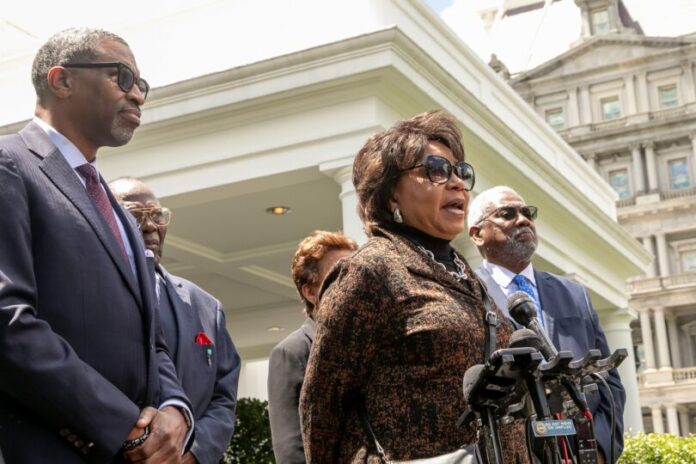
By Stacy M. Brown, NNPA Newswire Senior National Correspondent
On the 70th anniversary of the historic Brown v. Board of Education decision, President Joe Biden emphasized his administration’s commitment to educational equity by announcing new funding and resources aimed at enhancing school diversity and tackling racial segregation. The landmark 1954 Supreme Court ruling declared racially segregated schools unconstitutional, but recent data reveals persistent inequities in U.S. education.
“Every student deserves access to a high-quality education that prepares them to be the next generation of leaders,” President Biden stated. To further this goal, the Biden-Harris Administration introduced several initiatives, including a $20 million investment through the Department of Education’s Magnet Schools Assistance Program (MSAP). This funding will support magnet programs in states such as Arkansas, Colorado, and Florida, designed to attract students from diverse backgrounds. Additionally, the administration’s 2025 budget proposal seeks $139 million for MSAP and $10 million for the Fostering Diverse Schools program.
Moreover, a new Technical Assistance Center on Fiscal Equity will assist states and districts in developing fair resource allocation strategies. The initiative aims to address the stark resource disparities that exist between racially and economically segregated schools.
Stephen Benjamin, senior adviser to Biden and former mayor of Columbia, South Carolina, acknowledged the ongoing challenges. “There’s an acknowledgment every day with our president that we’re not where we ought to be, but we’re certainly not where we used to be. Still a lot of work to be done,” Benjamin declared.
The research underscores the strong correlation between school segregation and racial achievement gaps. The desegregation following Brown significantly boosted graduation rates for Black and Latino students. However, recent decades have seen a reversal, with segregation between white and Black students increasing by 64% since 1988, and economic segregation rising by 50% since 1991. According to the Department of Education’s State of School Diversity Report, racially isolated schools often lack the critical resources necessary for student success.
To combat these trends, the Department of Education announced the release of new data on access to math and science courses, highlighting ongoing racial disparities. The administration said it also plans to launch an interagency effort to preserve African American history, ensuring that students and the public have access to essential historical and cultural resources.
Officials noted that the American Rescue Plan has directed $130 billion to the nation’s schools, with a focus on underserved institutions. This includes nearly $2 billion in additional Title I funding, and a five-fold increase in funding for Full-Service Community Schools, which provide essential services to students and families in need.
Recognizing the importance of teacher diversity, the administration has prioritized efforts to increase the number of educators of color. Competitive grant programs have awarded $450 million to support teacher recruitment and retention, with a particular focus on diversity. Additionally, the Augustus F. Hawkins Centers of Excellence Grant program has provided over $23 million to HBCUs, TCCUs, and MSIs for teacher preparation.
The president met with family members of the plaintiffs from the Brown v. Board case. Cheryl Brown Henderson, daughter of lead plaintiff Oliver Brown, expressed the ongoing struggle for educational equity. “We’re still fighting the battle over whose children do we invest in. Any time we can talk about failing underfunded public schools, there is a problem,” Henderson said. NAACP President Derrick Johnson, also in attendance, affirmed, “We must continue to fight on all fronts.”
As the nation reflects on seven decades since Brown v. Board of Education, the White House said that the Biden Administration’s initiatives signal a renewed effort to fulfill the promise of equitable education for all. Schools “remain divided along racial, ethnic, and economic lines,” according to a 2022 report by the U.S. Government Accountability Office. “With around 18.5 million children attending schools where 75 percent or more of students were of a single race or ethnicity.”


